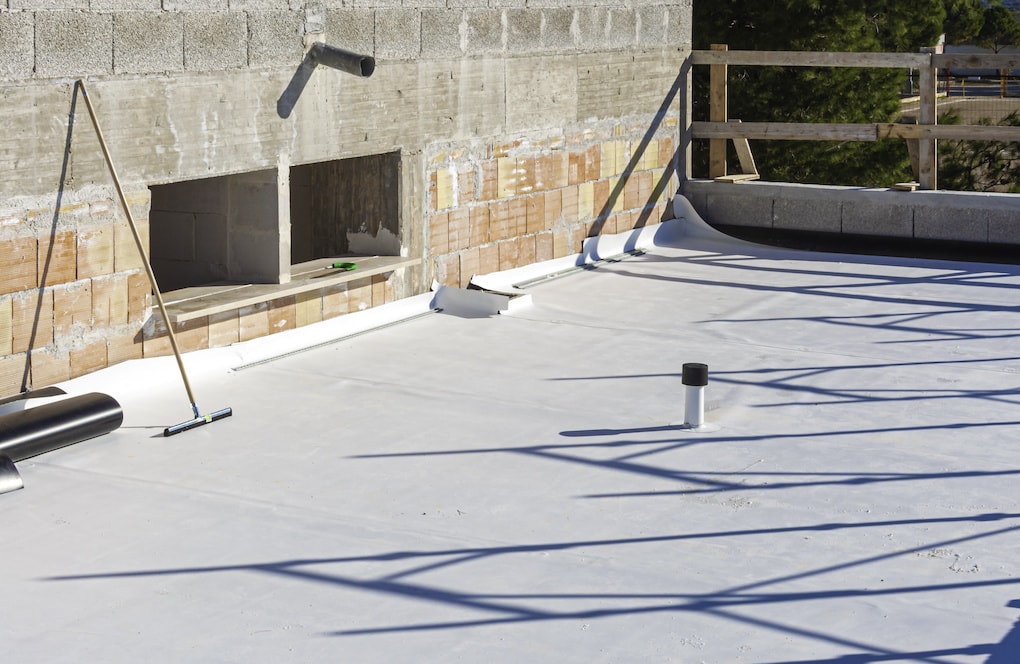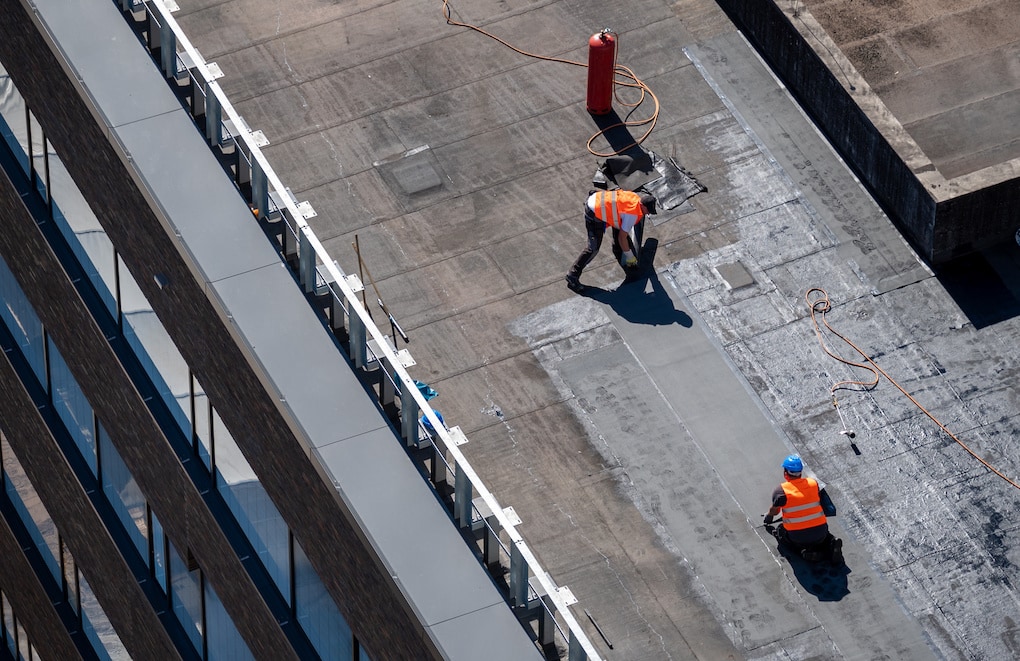TPO by GAF
TPO flat roofing stands for “thermoplastic polyolefin.” TPO is a single-ply roofing material, manufactured in sheets that are 10, 12, or 20 feet wide. These single-ply sheets are conveniently rolled up and taken to the commercial property for installation. TPO naturally reflects UV rays from the sun.
Cost: $3 to $7 per square foot for material
Lifespan: 15 to 30 years
Benefits:
- Fire resistant
- Plenty of insulation options to choose from
- Reflects away heat, saving money on energy bills

Installation Process for Flat Roofs
So you’ve got a general idea of different flat roof materials and their costs, but what can you expect from the installation process? How long does it take to install a flat roof? Well, working with a skilled commercial roofing contractor will make all the difference for a fast and effective installation process.
Planning and Installation process
How we prepare the roof to prevent leaks
4 Step Installation Process
At GenSun Roofing, we are committed to getting commercial roofing projects done right the first time. You should never have to wait on unreliable communication or shady pricing structures when it’s time to replace or repair your commercial roof. Our team has implemented a four-step process so that you know exactly what to expect when it’s time for your flat roof installation.
Step 1
At the first signs of an aging flat roof, reach out to us right away. You will schedule a free inspection and estimate, during which we will use innovative technology to document your roof’s condition and any damage. Then, we will offer a detailed explanation of what we found and offer our recommendations for repairs or replacement. You will receive a detailed quote for the work we recommend.
Step 2
After you review our findings, estimate, and recommendations, and officially decide to hire us for the project, we will send over an agreement that details the full scope of the work that will be done. We will work with you to schedule a convenient time to begin the installation process. We always maintain close communication and let you know right away if work needs to be rescheduled due to inclement weather.
Step 3
The job site supervisor will be your point of contact on installation day. A skilled, professionally-trained team of flat roof installers will be on-site on time to repair or replace your roof. For smaller commercial buildings, installation can be completed in as little as 5 days. In terms of larger buildings, flat roof installation can take up to 2 to 3 weeks.
We keep a digital photo record of every step of the installation process. Once the work is done, the site supervisor will complete an in-depth final inspection and clean up all debris. Our clean-up process is so reliable that you won’t even know we were there!

Step 4
It’s our goal that every customer is completely satisfied with their new commercial roof, so we strive to always get our projects done right the first time. If for any reason you’re unhappy with the result, that means we’re unhappy, too. Always feel free to reach out, and we’ll be sure to make the situation right.
Pros and Cons of Flat Roofs
If you’re considering building a brand new commercial building, you’re likely wondering if you should go for a flat or sloped roof. There are advantages and disadvantages to flat roofs, so, hopefully, this list helps inform you if a flat roof is the best decision for your business.

- Increased flexibility: Flat roofs offer the potential for adding air conditioning units on the roof rather than on the ground, installing a green roof, or building a finished terrace for residents or employees to hang out on the rooftop.
- Lower utility bills: Many flat roofing materials reflect UV rays, keeping the building cooler. It is also very easy to install solar panels on flat roofs, meaning you can reap additional benefits of renewable solar energy.
- Simple installation: Flat roofs are fast and easy to install, so you can get back to regular business operations quickly. Flat roofs are also safer for contractors since there isn’t a slope they have to balance on.

- Not ideal for very large buildings: The larger the flat roof, the more unstable it can become. Typically, flat roofs are just fine for the majority of commercial buildings, but very large buildings may require additional measures. These measures may look like changing the weight distribution on the building’s interior to improve stability.
- Limited lifespan: While some residential roofing materials can last between 50 and 100 years, most flat roofing materials last a maximum of about 30 years. Most commonly, replacements are needed after about 15 years. However, the low cost of flat roofs makes more frequent replacements accessible.
- Complex water drainage: To avoid pooling water on flat roofs, your roofing contractor will need to install a high-performing drainage system.
- Shrinking membrane: Some flat roof materials may experience shrinkage. Some membranes shrink when exposed to a lot of UV radiation. If the membrane shrinks, it makes hail more of a hazard for your building.
Choose the Most Reliable Flat Roof Installation Team
There’s a lot to consider when it comes time for a commercial flat roof replacement. It can feel intimidating trying to choose the best material for your budget. Thankfully, the highly-trained team at GenSun Roofing knows what types of materials will be best for your budget, climate, and the size of your building.
Get the most out of your commercial flat roof and trust the team that gets the project done right the first time.
